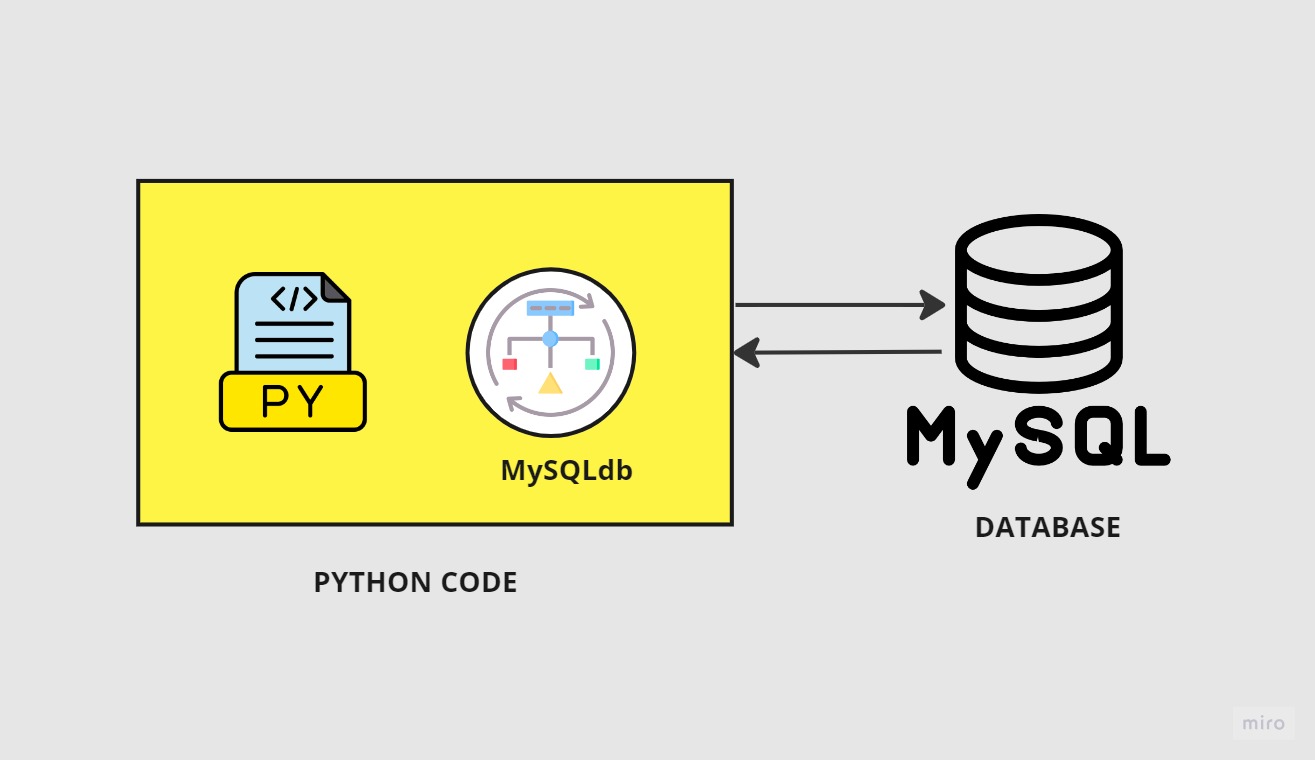Exploring Python ORM: A Guide Using MySQLdb
 Olutayo Ogunlade
Olutayo Ogunlade
Introduction to Python ORM and MySQLdb
In the context of databases and programming, "mapping" often refers to the process of establishing a connection or relationship between two different entities. In object-oriented programming (OOP), developers work with objects. Objects encapsulate data and behavior into a single unit, providing a natural and intuitive way to model real-world entities. So, the process of mapping involves establishing a clear relationship between objects in the code and tables in the database. Each class or object in the program corresponds to a table in the database, and attributes in the class correspond to columns in the table.
Object-Relational Mapping (ORM) in Python simplifies database interactions by providing an intuitive, object-oriented interface to interact with databases. A common module used for this purpose is MySQLdb, which connects Python applications to MySQL databases.
In this article, we'll explore the basics of Python ORM using MySQLdb through a practical example: listing states from a MySQL database.
Setting Up the Database
Let's start by creating our database and table. Consider the following SQL script (select_states.sql):
-- select_states.sql
-- Create states table in hbtn_0e_0_usa with some data
CREATE DATABASE IF NOT EXISTS hbtn_0e_0_usa;
USE hbtn_0e_0_usa;
CREATE TABLE IF NOT EXISTS states (
id INT NOT NULL AUTO_INCREMENT,
name VARCHAR(256) NOT NULL,
PRIMARY KEY (id)
);
INSERT INTO states (name) VALUES ("California"), ("Arizona"), ("Texas"), ("New York"), ("Nevada");
This script sets up a database named hbtn_0e_0_usa, creates a table named states with an id and name column, and inserts some sample data.
Python Script Using MySQLdb
Now, let's create a Python script (select_states.py) that utilizes MySQLdb to interact with our MySQL database.
#!/usr/bin/python3
# select_states.py
import MySQLdb
def select_states(username, password, database):
# Connect to MySQL server running on localhost at port 3306
db = MySQLdb.connect(user=username, passwd=password, db=database, host='localhost', port=3306)
# Create a cursor
cursor = db.cursor()
# Execute the query
query = 'SELECT * FROM states ORDER BY id'
cursor.execute(query)
# Fetch all the rows
rows = cursor.fetchall()
# Display results
for row in rows:
print(row)
# Close the cursor and connection
cursor.close()
db.close()
if __name__ == "__main__":
# Provide MySQL username, password, and database name as command-line arguments
import sys
if len(sys.argv) != 4:
print("Usage: {} <username> <password> <database>".format(sys.argv[0]))
sys.exit(1)
username, password, database = sys.argv[1], sys.argv[2], sys.argv[3]
# Call the select_states function
select_states(username, password, database)
This script does the following:
Connects to the MySQL database using provided credentials.
Executes a SELECT query to fetch all rows from the
statestable, ordering byid.Prints the results in the desired format.
Understanding MySQLdb Concepts
1. Connecting to the Database
The MySQLdb.connect method establishes a connection to the MySQL server. We provide it with the necessary connection parameters: username, password, database name, host, and port.
2. Executing Queries
The cursor.execute method is used to execute SQL queries. In our case, we run a simple SELECT query to retrieve all rows from the states table, ordered by id.
3. Fetching Results
The cursor.fetchall() method retrieves all the rows returned by the query, which we then iterate and print.
4. Closing Connections
To prevent resource leaks, it's crucial to close the cursor and database connection using cursor.close() and db.close().
Running the Script
After creating the database and script, execute the following commands:
cat select_states.sql | mysql -uroot -p
python select_states.py root root hbtn_0e_0_usa
Replace "root", "root", and "hbtn_0e_0_usa" with your MySQL username, password, and database name.
The script will connect to the MySQL server, execute the query, and display the sorted list of states.
Conclusion
MySQLdb simplifies Python ORM by providing a convenient way to interact with MySQL databases. This article walked through a practical example, demonstrating how to list states from a MySQL database using Python ORM. By leveraging MySQLdb, developers can build cleaner, more maintainable code when handling database operations in Python applications.
Subscribe to my newsletter
Read articles from Olutayo Ogunlade directly inside your inbox. Subscribe to the newsletter, and don't miss out.
Written by

Olutayo Ogunlade
Olutayo Ogunlade
Tech enthusiast, Full Stack Software Engineer, and Graphic Designer with a passion for crafting engaging web experiences. Exploring the digital world one code at a time. 🚀"